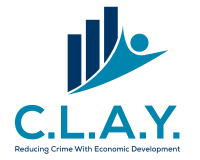Despite the clear socioeconomic and labor market benefits derived from youth apprenticeships, collectively we have work to do in both improving programs and raising student and parent awareness about a career preparedness path with a quarter of a million dollar higher lifetime earning potential than for non-apprentices.

Ideally, apprenticeship programs satisfy the labor market needs of businesses while providing constructive skills-building opportunities for students and other young people. There is a strong potential for individual development, where a youth can learn what their strengths and improvement areas are, as well as what they like and don’t like. And ideally, apprenticeship programs complement or build off of what students are already absorbing through the general education curriculum.
Clear economic, social benefits to apprenticeship
At the city level, both in government and within nonprofit and community-based organizations, there are clear incentives for generational wealth-building, poverty reduction and even economic development to place renewed focus on apprenticeship programs. The Department of Labor estimated, for example, that for every $1 a business spends on apprenticeships, they get nearly $1.50 back in productivity and innovation.
For parents and families, a college education will continue to be the right path for many students. But even with grants and scholarships, it’s an expensive proposition. At the very least, they may want to avoid the idea of a student going to college and not having any idea what they want to do with the degree at the other end. Before, and even during college, apprenticeship opportunities can accentuate real-world choices and focus minds.
How, then, can cities go about promoting youth apprenticeship programs? And how can they go further where programs of some kind already exist?
How much do students, families know about what apprenticeship means?
Some students and families will have a vague idea that apprenticeship and training programs exist. Others either won’t or will have misconceptions about what they do and mean.
Arguably, the best way to communicate the benefits of such programs is to talk about or show potential outcomes. For example, engaging in program X yields benefits A, B, and C, which in turn will prepare the student for Job D or Company E. They can, and in many cases should, still pursue a college degree or further training to enhance their prospects. Done this way, apprenticeships take on an image of what they truly represent, which is maximizing freedom of choice.
Better business support, locally generated programs
Even if a business has thought of the idea of an apprenticeship, they may think it isn’t for them. This could be because of perceptions that such a program would be cost-prohibitive, or they would have to provide services and support they don’t have the time and resources for.
In Tennessee, the ApprenticeshipTN program has existed through our state’s Workforce Development System for some time now. But apprenticeships – and vocational education in general – are still too frequently seen as disadvantageous, despite gradual changes in their public image. Europeans are more likely to emphasize job-related skill acquisition than Americans, researchers at the Brookings Institution observed, with Americans being firmer believers in imparting a general skillset, usually through college.
To varying degrees, state and community organizations work closely together with businesses to both start an apprentice pipeline and financially ease, incentivize or support them in doing so. With the economic benefits identified above, cities should ensure increased business awareness and participation goals are at the forefront of their efforts to locally expand apprenticeships. City programs, designed properly, can support whatever their respective states do and even work closely alongside it, ideally through public-private partnerships as well as working with eligible nonprofits.
Perhaps above all, apprenticeships are an equity tool. They generate opportunity for young people by building critical relationships, while also giving existing industry workers and leaders a connection to the generations coming after them, rewards that are both innumerable and enduring.
